A Southern Guide To Setting The Table For Any Occasion
Whether you’re prepping for bridge or a bash, here’s what you need to know.
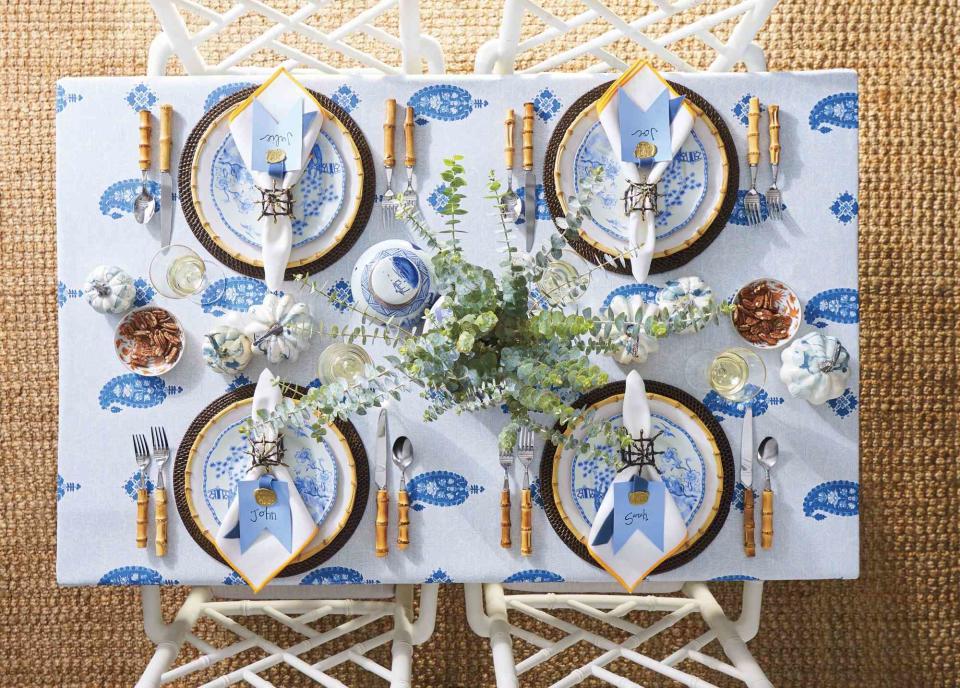
Some might argue that setting a table is a lost art, but for those of us in the South, it's a skill that's ingrained in us from the get-go. As kids, our sole dinner responsibility was setting the table while Mama finished the meal. Each place setting received a fork placed on a folded napkin, a knife (blade facing toward the plate!), and a spoon. That spoon may not have always been touched, but by golly, it was on the table…just in case.
Setting a standard table is one thing, but the real fun starts when we get to play with colors, patterns, and special plates for casual parties and formal occasions. If you're setting an elevated table for the first time, your mind might start spinning with all of the suggestions and rules. Where should the water glass go? How many forks are appropriate? What is the point of a charger plate? Don't worry, we have you covered with a step-by-step guide on how to set a table for almost any gathering you can think of.
Advice From a Pro
Before you get lost in the details, Paige Minear of The Pink Clutch recommends starting with a theme, whether it's the table or the menu. "That way, it's easier to make choices about linens, china, and other details," she says. "If you're hosting a shrimp boil, you likely won't use white linens, unless you want a mess!"
Paige also advises to be aware of the timing of your party. "Only use the flatware, glassware, and table accessories for the appropriate time of day. For example, you shouldn't use candles for a breakfast or a lunch."
Attention to detail can go a long way, too. "When entertaining, even for casual meals, I like to use place cards, so there's no confusion about where anyone should sit. Pair people who have things in common and try to separate couples to encourage conversation."
To keep things simple, we've broken the table settings into three categories. Think of this as your dining primer.
How to Set a Standard Table
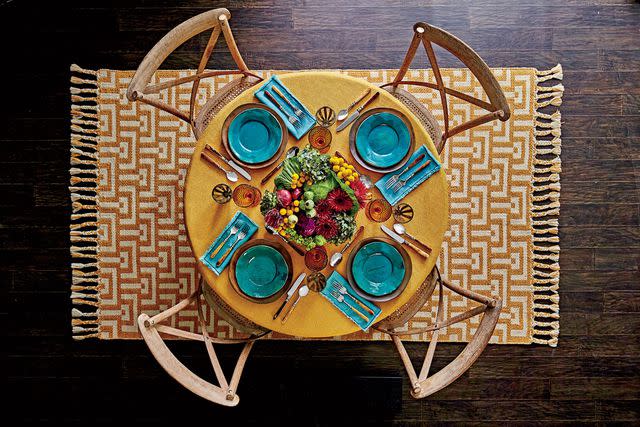
A standard table setting is the base of it all. Think of this informal table setting as your foundation for every table you design. From this premise, you can build upon the setting to create anything from a luncheon table to a formal table. It's your starting point.
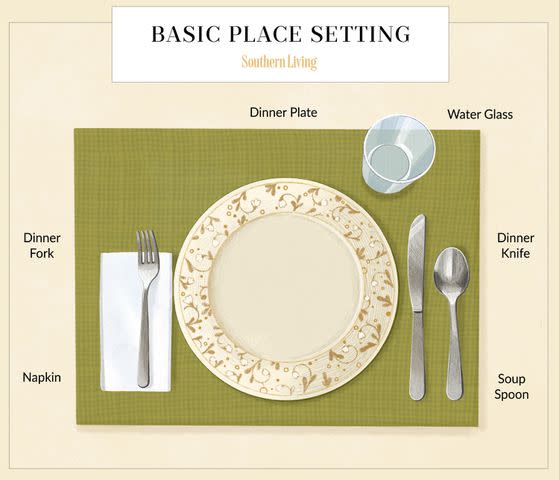
Southern Living / Corinne Mucha
Your Step-by-Step Guide for Setting a Table
Place the tablecloth or placemat on the table.
Add the dinner plate in the center of the placemat or directly in front of the chair.
Fold the dinner napkin and lay it to the left of the plate.
Put the dinner fork on top of the napkin.
Put the knife and soup spoon to the right of the plate. The knife's blade faces toward the dinner plate. Check that the bottom edges of all of your utensils and the plate are level from left to right.
Last, add your water or beverage glass. Emily Post explains that the best way to know where to put your glass is easy. Simply place it directly above the knife.
How to Set a Casual (Yet Elegant) Table
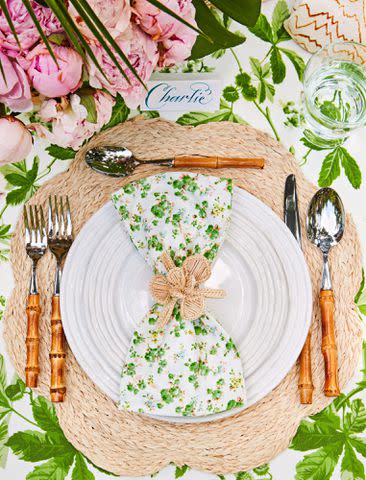
A casual table is where you can start to have a little more fun with your china, flatware, and glassware selections. In fact, you've likely oohed and aahed over many casual table settings. Think of adding popular patterned salad plates or soup bowls as well as sparkly crystal wine glasses. Consider the casual yet elevated table your medium ground between a standard and a formal setting.
This type of table is ideal for bridal luncheons, intimate dinner parties, and Sunday suppers. It's also a good opportunity to use those extra table items such as bread and butter plates or napkin rings. While chargers are typically reserved for formal settings, this is the South, and we don't do things halfway. A simple rattan or woven charger adds texture. Be sure to choose either a charger or a placemat. There's no need for both.
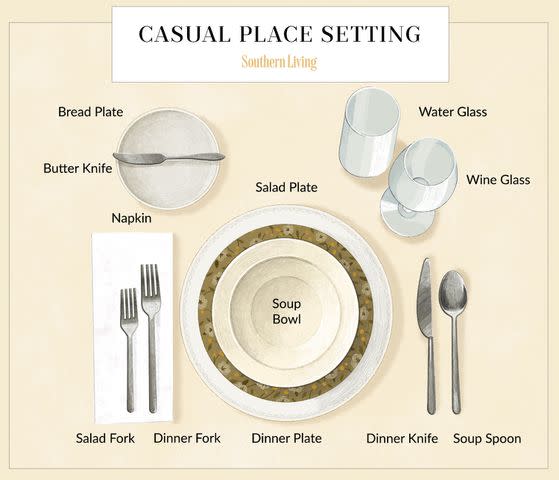
Southern Living / Corinne Mucha
Your Step-by-Step Guide for Setting a Casual Table
Start with a tablecloth, placemat, or charger as your foundation.
Add the dinner plate in the center of the placemat or directly in front of the chair.
Place the salad plate in the middle of the dinner plate.
If there will be a soup course, put the soup bowl in the middle of the salad plate.
Fold the dinner napkin and lay it to the left of the plate.
Put the salad fork to the left of the dinner fork, and place both on top of the napkin.
Put the dinner knife and soup spoon to the right of the plate. The knife's blade faces toward the dinner plate. Check that the bottom edges of all of your utensils and the plate or charger are level from left to right.
If there is bread service, place the bread plate directly above the dinner napkin and fork. Put the butter knife directly on the plate at 10 o'clock with the blade facing toward the diner.
Place the water glass directly above the dinner knife.
If serving wine, put the wine glass to the right of the water glass.
How to Set a Formal Table

The formal table setting concept speaks for itself. These tables are best for special occasions or meals with three or more courses. Here, let the menu be your guide. Just because you inherited your great-grandmother's sterling silver oyster forks doesn't mean they get added to the table. Only incorporate utensils and china that you will be using for the meal. Not serving a salad? Do not add a salad fork to your formal table. Think of it as fewer dishes to do after a long night of hosting.
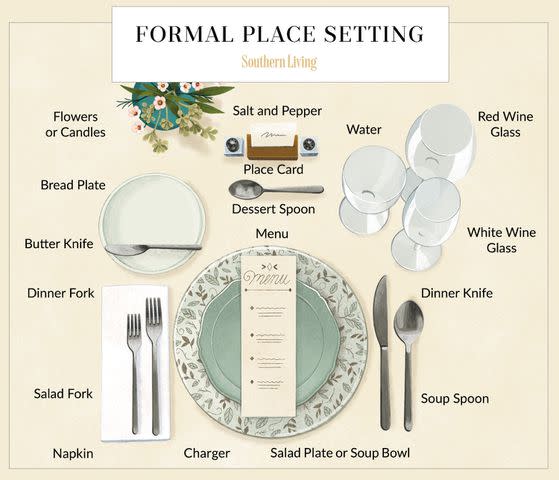
Southern Living / Corinne Mucha
Your Step-by-Step Guide for Setting a Formal Table
Start with your tablecloth as the foundation. A white tablecloth is generally used to signify a formal dinner, but Paige says it's always fun to add a little color to your table via your linens.
For a formal table setting, use a charger. Place it directly in front of the chair.
Review your menu, and add either the salad plate or soup bowl directly on top of the charger. If you will have both a soup and a salad course, the soup will be served first followed by the salad. Use (and clear) the dishes accordingly. The dinner plate will not be used until after the other course(s) are cleared.
Fold the dinner napkin and lay it to the left of the plate.
Put the salad fork to the left of the dinner fork, and place both on top of the napkin.
Put the dinner knife and soup spoon to the right of the plate. The knife's blade faces toward the dinner plate. Check that the bottom edges of all of your utensils and your charger are level from left to right.
If there is bread service, place the bread plate directly above the dinner napkin and fork. Put the butter knife directly on the plate at 10 o'clock with the blade facing toward the diner.
Since there will likely be a dessert course, place a dessert fork or spoon directly above the charger.
A place card and individual salt and pepper bowls will go above the dessert utensil.
Place the water glass directly above the dinner knife.
If serving white wine, put the white wine glass to the right of the water glass, directly above the spoon.
If serving red wine, put the red wine glass above the white wine glass. At this point, you will have a triangle of glasses: water, white wine, and red wine.
Ultimately, there are many variations for a formal setting, not to mention incorporating things like flowers and candles. When in doubt, remember that at the end of the day, it's about your guests having a great time and a wonderful meal.
Why Setting the Table Is Important
With all the prepping and planning required to get that perfect tablescape, you may wonder why you are going to such great lengths. Whether it’s a casual family meal or a more formal affair, setting the table creates an inviting place to enjoy food with friends and family, sets the tone for the event, and shows you care about your guests. It’s also a reason to pull out those sentimental pieces that remind you of holidays at your grandmother’s house.
More Tips for an Inviting Table
While there are plenty of rules for a nice table, consider these additional tips for making setting the table for any occasion a breeze.
It’s okay to place the napkin on top of the dinner plate. Guests will likely reach for it first, and this placement means there’s no shuffling of silverware to get to the napkin. It’s also an opportunity to show off napkin-folding skills or use those fancy napkin rings you never pull out.
Don’t set out your tablecloth and hope the wrinkles just fall out. This is one time when ironing is essential. If a meal is special enough for linens, they should look their best and that means ironing them for a crisp, clean look.
Consider the shape of your dining table when choosing a theme and décor. Use chargers instead of placemats for round or oval tables. They take up less space while still designating each place setting. Whatever the shape, choose a tablecloth that hangs at least 12 to 15 inches over the table’s sides. If you choose a runner, make sure the fabric hangs 12 inches at each end.
Search your house to repurpose what you already have. Use pitchers as vases and mint julep cups to hold buds, jars for candleholders, and natural elements for name cards. Layer mismatched patterns of plates and silverware, and tie it all together with colorful napkins, ribbons, or flowers.
For more Southern Living news, make sure to sign up for our newsletter!
Read the original article on Southern Living.

